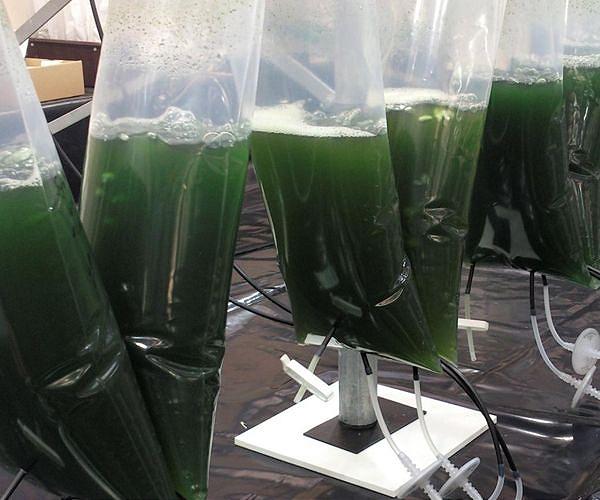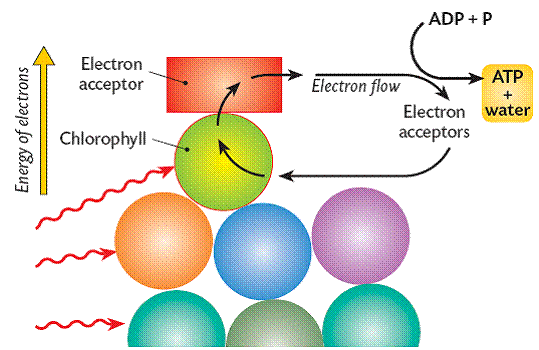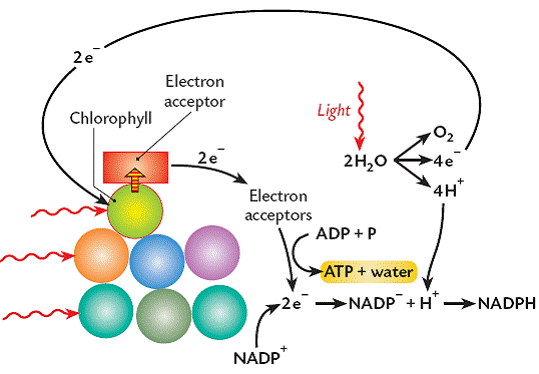Researchers from the University of Queensland (UQ) and the University of Münster (WWU) have purified and visualized the circulating electron flow (CEF) supercomplex, which is a key part of the photosynthesis mechanism of all plants. The development of a generation of solar biotechnology.
This discovery was published in the Proceedings of the National Academy of Sciences in collaboration with the international team of scientists at the University of Basel, Okayama University and the University of New South Wales, and provided new insights into the photosynthesis process at the molecular level.
By 2050, we will need to increase fuel by 50%, food by 70% and clean water by 50% to meet the needs of all mankind. Professor Ben Hankamer of the UQs Institute for Molecular Bioscience said that microalgae technology based on photosynthesis has the potential to play an important role in meeting these needs. He is the head of the Centre for Solar Biotechnology. By better understanding how these microorganisms capture and store solar energy at the molecular level, it will promote the development of solar-based biotechnology.

Microalgae culture that grows rapidly in wastewater and light conditions.
For more than 3 billion years, plants, algae, and blue-green bacteria have evolved sophisticated nanoscale operations that enable them to perform photosynthesis. In the process, solar energy is captured and stored as chemical energy.
This chemical energy exists in the form of ATP molecules and NADPH molecules, which are essential for many cellular processes.
ATP and NADPH enable photosynthetic organisms to grow. As they grow, they produce oxygen in the atmosphere as well as food and fuel. These foods and fuel support life on Earth. Professor Hippler said that he is in WWUs Plant Biology and Technical Institute work.
There are two modes of photosynthesis: linear electron flow (LEF) and circulating electron flow (CEF). In order to work efficiently under changing light conditions, a photosynthetic organism must balance the light it absorbs with the energy it needs, ATP and NADPH. It does this by constantly fine-tuning the relationship between these two modes.

One of the forms of photosynthesis: cyclic electron flow (picture from leavingbio.net )

The second form of photosynthesis: linear electron flow (picture from leavingbio.net )
There is biochemical evidence that a large molecule called a circulating electron flow (CEF) supercomplex plays a key role in this fine-tuning process. However, Professor Hankamer said that due to its dynamic nature, it is difficult to use this supercomplex for structural determination.
To solve this problem, the research team used sophisticated methods to purify and characterize the CEF supercomplex from microalgae, and then analyzed its structure with an electron microscope.
In search of super-complexes, the researchers painstakingly extracted about 500,000 protein complexes from microalgae. Only 1,000 of them are CEF supercomplexes.
Structural analysis reveals how the light-harvesting complex, light system, and cytochrome b6f components are assembled into CEF supercomplexes, and how they are arranged so that they can be dynamically connected and disconnected to perform different functions and adapt the organism to different Light conditions and energy requirements.
This information, combined with additional experimental evidence, allows researchers to propose a new hypothesis to explain how the CEF supercomplex works.
Professor Hippler said that the CEF supercomplex is an excellent example of a highly conservative evolutionary structure. He explained that it seems to be protected in many plants and algae and may not have changed significantly over millions of years.
Professor Hankamer explained that this work is critical to the efforts of the Solar Biotechnology Center to develop the next generation of solar biotechnology and industry.
The center has been expanded to include 30 international teams in Europe, Asia, the United States, Australia and New Zealand, and is committed to developing next-generation solar-driven biotechnology based on photosynthetic green algae.

The solar energy converted by photosynthesis is about 10 times that needed by humans, and it is also the basis for the survival of most living things on earth.
Professor Hankamer said the team's goal is to optimize the photosynthesis mechanism of green algae to produce technologies that help meet the world's energy, food and water needs. To achieve these goals, we need to understand how photosynthesis works at the molecular level.
This new information will help guide the design of next-generation solar capture technologies based on microalgae and various solar-powered biotechnologies and industries for the production of high-value products, food, fuel, and clean water. As the international community develops solutions to combat climate change, the extraction of carbon dioxide from the atmosphere and its utilization and storage are also exciting areas.
(Original source: Daily Biofuel China New Energy Network Comprehensive)
China manufacturer supply Disposable Protective Mask
Company information:
Our company is specilized in manufacturing Disposable Mask like KN95 Mask , 3ply disposable mask. Our production ability is 500000pcs/day for the disposable mask. Custom logo is acceptable if needed. We keep high quality control for the disposable Protective Mask.
Packing: export standard, with carton box packing.
Standard: GB2626-2006
Certificate:CE/FDA
If you need the protective mask, Medical Mask , pls contact us directly, thanks.
Disposable Mask,Disposable Protective Mask,Protective Mask,Medical Mask
Dongguan Smart Furniture Co.,Ltd , https://www.smtfurniture.com